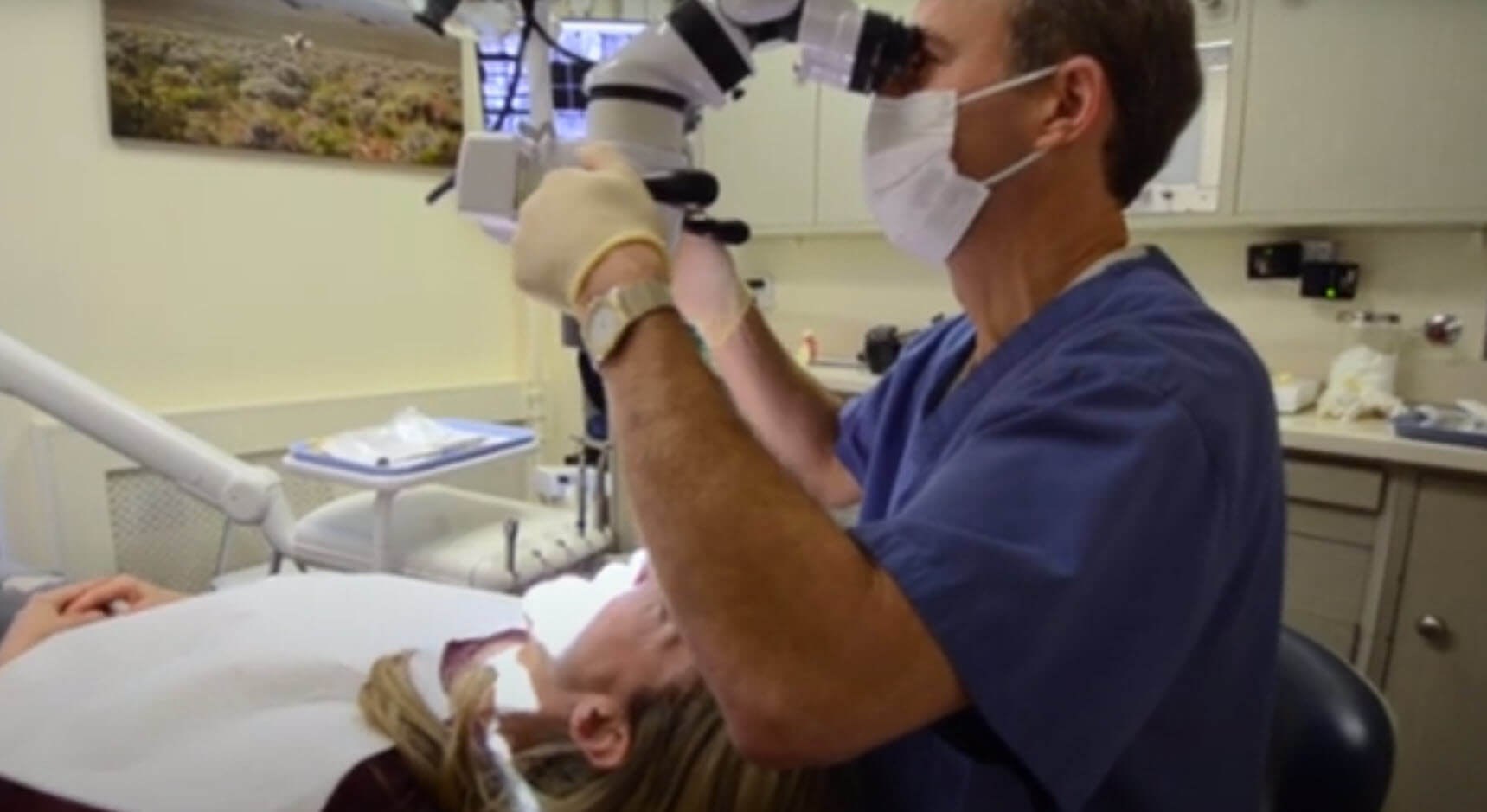The best treatments for a front tooth that’s irreparably damaged, and teeth with recession are immediate dental implants and microsurgery techniques. They can provide a large advantage over normal techniques. Faster healing times and less painful procedures can make patients happier and more satisfied with their treatment. Delayed implants may lead to difficulty in achieving a superior aesthetic outcome, and non-microsurgical techniques are less precise. Using immediate implants and microsurgery can mitigate both of these issues. The following is a particular case from my New York City practice, and a case study of the kinds of results one can achieve when using these kinds of techniques.
Case Study
This is a 40-year-old male who presented with poor oral hygiene. Tooth #8 shows altered passive eruption, and tooth #9 displays advanced root resorption, ankylosis, a thin periodontium and recession (bone loss) of 3 mm. The prognosis for #9 was hopeless. How would you treat this case?
Typically you have two choices:
- Remove tooth #9 and wait for primary closure of soft tissue. Then bone graft the site and follow with delayed implant placement. Two to four months after implant placement, provisionalization, and soft tissue graft.
- Orthodontically extrude tooth #9 to regenerate soft and hard tissues and then follow with an immediate implant, provisionalization, and soft tissue graft.
Both of these choices have benefits and issues. Here’s how we, at my New York City practice, handled it.
When analyzing this case, I noted that, except for the missing buccal plate, all other bony walls surrounding tooth #9 were of normal form. The question is: can the soft tissue recession and bone deficiency be treated concurrently and result in an aesthetic outcome? An implant is typically placed 3mm below the free gingival margin, therefore judging from the amount of recession, approximately 3-4 mm of vertical buccal bone was needed. Additionally, we needed to recreate a thicker periodontium and match the altered passive eruption at tooth #8. This is a particularly complex case.
I treated this case in one visit by combining proper microscope-assisted tooth removal (atraumatic tooth removal by sectioning the root into 2-4 segments), immediate implant placement, bone, and soft tissue graft, and an appropriately shaped screw retained composite provisional. This combination of procedures will maintain existing anatomic form and promote regeneration of lost structure. I believe after trauma (tooth removal), our body upregulates its healing capacity. Using a minimally invasive microsurgical approach further enhances this “healing” event and leads to a more predictable result.
I was able to turn a prognosis which would have required quite a long-term treatment into a single-visit event that provided the patient a higher level of care with a more predictable and acceptable timeline of healing. Treating this condition in one visit has so many advantages over the previous treatment options and results in better aesthetics and a very happy patient.
For patients, compound mouth issues may seem hopeless, but there are treatments that can fix many problems. Microsurgical techniques and immediate implants allow you to get back to your life faster and with less pain than longer-term solutions. At my New York office, I will always attempt to provide every patient with this type of care because I not only value my patient’s time and satisfaction, but I also am constantly looking toward new technologies and techniques to make my care better.
I encourage all prospective patients in the New York area to call my office at (212) 702-9088 or contact me online and come in for a consultation to see what care we can give you.
